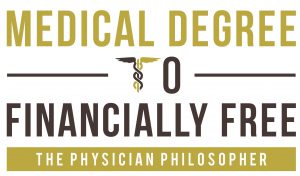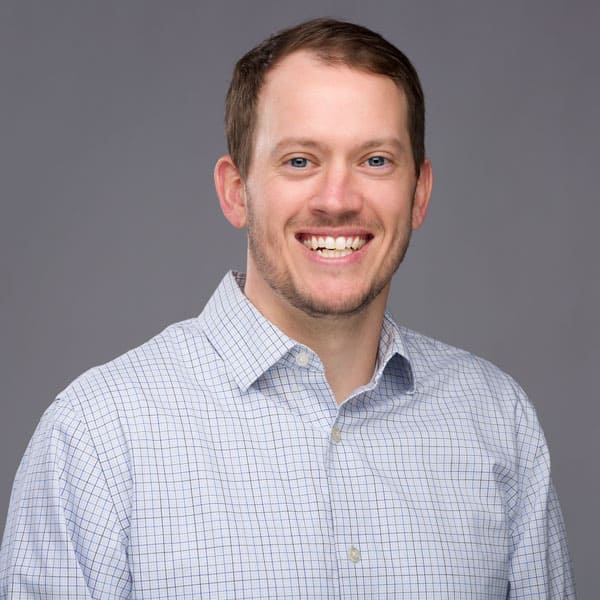 Money is a funny thing. When you first start gaining financial literacy it all seems very complicated. We assume that we need enough money to replace 70-100% of our current income in order to retire. It turns out that’s not actually true. It has a lot more to do with your annual spending, and – in this post – we will dive into my annual spending as a case study to show why this number is so important!
Money is a funny thing. When you first start gaining financial literacy it all seems very complicated. We assume that we need enough money to replace 70-100% of our current income in order to retire. It turns out that’s not actually true. It has a lot more to do with your annual spending, and – in this post – we will dive into my annual spending as a case study to show why this number is so important!
I teach my students in Medical Degree to Financially Free what I call the ESB model – and no that does not stand for Extra Special Bitter pale ale, though I do love those! It stands for Earn, Save, and Build.
When it comes to money, all you have to do is earn a good paycheck, which fortunately every doctor should be able to do. Next, you need to spend less than you earn. Then, you’ll want to save the difference between the two. Finally, you’ll want to apply that savings toward building your wealth either by paying down debt, or investing. Earn. Save. Build Wealth.
Like I said, it’s simple – at least in theory. In reality, the psychological decision-making process proves to be the hard part. Like a rate-limiting step in chemistry, it turns out that spending ends up being the show-stopper when it comes to money. In Medical Degree to Financially Free students learn how to combat this problem.
In this post, we are going to take a deep dive into my family’s spending over the past 12 months. Why? Because I’ve been asked on multiple occasions for these numbers when I publish our net worth numbers each quarter. Fortunately, as long as you spend less than you earn, you don’t need to know this number exactly – which is a perfect description of my family’s current spending habits.
So, here it is. All of The Physician Philosopher family spending wrapped into a single post!
Note: Medical Degree to Financially Free is the only online course that teaches doctors how to create a cash flow plan that will allow them to pay down their debt, invest efficiently for their goals, and find the financial freedom a doctor deserves. The doors open TOMORROW, May 26th. And then they slam shut on June 10th and will remain closed for the next 6 to 12 months. Click here for more information!
Overview of The Physician Philosopher Annual Spending
When it comes to our annual spending, we put 90% of our spending on two credit cards. I have the American Express platinum card – which I love by the way – and Kristen uses the Chase Saphire Preferred card. The other 5% is paid from our bank account directly for things that we are not allowed to pay for with a credit card, including daycare costs and some of our bills.
Here is the break down:
- American Express Platinum card = $88,496
- Chase Saphire Preferred card = $46,066
- Banking Account = $30,028
- Our mortgage = $27,600
Total Annual Spending = $192,190
Is This a True Reflection of Our Annual Spending?
The reason anyone cares about annual spending numbers is that it helps you determine how much you need for Financial Independence. In general, the FIRE community espouses a 25 X rule. If you multiplied the number above, this would say that we need $4.805 million to be financially independent.
Yet, this isn’t really accurate. When you try to approximate how much you need for retirement, it is important to realize that you won’t carry every current expense into retirement.
Our annual savings number above includes several things most would not categorize as annual spending and/or that we should anticipate avoiding in retirement. For example, it includes:
- Charitable Giving (I won’t disclose an actual number, but it is ~10% of our Adjusted Gross Income)
- Childcare Expenses
- Mortgage Payments
In my retirement years, I do not intend to have a mortgage or childcare expenses, though we do plan to still give to charity. However, that number will also be reduced based on the amount of money we take out of our accounts each year.
What is Our Actual FI Number?
If we subtract out the numbers above that won’t follow us into retirement, our actual spending changes quite a bit.
It turns out our annual spending number (even with 3 kids we won’t be paying for in retirement) is closer to $120,000. Thus, our actual number to reach FI isn’t close to $5 million. It is actually $120,000 x 25 = $3 million.
Of course, this 25 X rule is based on the classic “4 % Rule” where it is assumed that a safe withdrawal rate during retirement is 4%. If you are retiring early (before age 60) I am not sure that number will work, though.
Even assuming a more conservative 3.5% withdrawal rate, our financial independence number is $3.434 million.
What About Other Factors?
There are a few things we haven’t really touched that may impact all of this.
First, we haven’t discussed inflation where every year a dollar has less and less buying power. Annual inflation averages ~2-3% annually. Assuming a 2.5% average annual increase, our current annual spending rate of $120,000 will cost us $153,610 in ten years.
That is no small change! In fact, that’s a 28% increase in cost despite the same lifestyle.
A second big factor we haven’t touched on includes costs we have in retirement that may be paid for by our employer. The biggest, of course, is health care expenses. Given that I plan on having health insurance through my employer for the next 20 years (even after we Partial FIRE), I don’t know what to do with this.
Certainly, health care will change dramatically before that time. So, I don’t put a lot of weight into figuring that out yet.
The third, and final, factor is that we may still have income streams in addition to the money we have saved. In fact, I support a hybrid view of financial independence where physicians have multiple sources of retirement income that may include passive income (think real estate, businesses, etc) and stock market assets they can safely withdraw.
Take Home
It all comes back to that Extra Special Bitter pale ale Earn Save and Build Wealth model preached above. Earn a good paycheck. Spend less than you earn. Save the difference. And Build Wealth.
In order to do that, it does require you to know something about your spending. If you want to take a deeper dive into the exact process my family used to tackle our spending and then pay down $300,000 in debt and increase our net worth by $500,000 in two years – sign up for Medical Degree to Financially Free. It is the only course build specifically for doctors by a doctor that will teach you how to cash flow plan so that you can pay down your debt and find the financial freedom you deserve.
What is your annual spending number? How much do you anticipate needing in retirement? Leave a comment below.





0 Comments